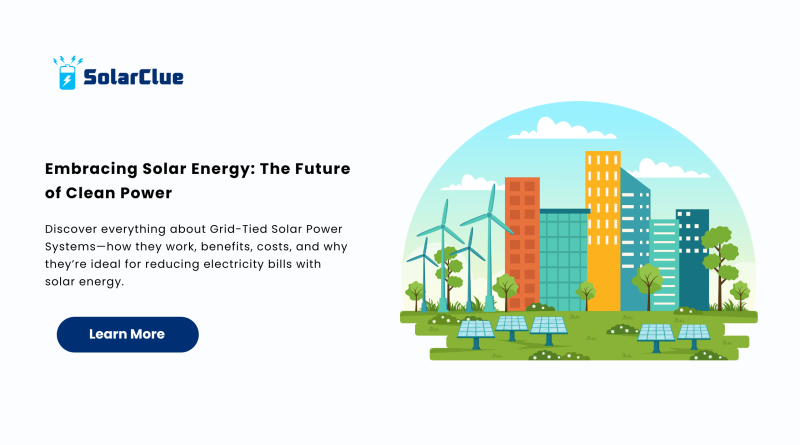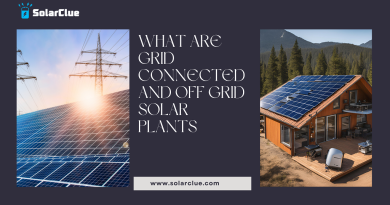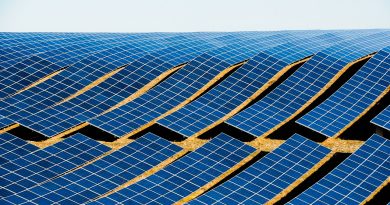Embracing Solar Energy: The Future of Clean Power
Solar energy is one of the most abundant and transformative sources of power available today. It refers to the radiant light and heat harnessed from the sun and converted into usable electricity through advanced technologies. This natural resource offers a sustainable alternative to fossil fuels, helping mitigate the environmental damage caused by traditional energy production.
The concept of using the sun as a power source is not new. However, only in recent decades has solar power evolved into a mainstream solution due to advancements in photovoltaic (PV) cell technology and growing global awareness of the need for renewable energy.
Table of Contents
- 1 Why Solar Energy Matters Today
- 2 Solar Power vs Other Renewable Energy Sources
- 3 How a Solar Power System Works
- 4 Types of Solar Power Systems
- 5 Advantages of Using Solar Power
- 6 Challenges of Solar Power Adoption
- 7 Is Solar Energy Truly Renewable?
- 8 Top Applications of Solar Energy
- 9 Solar Energy in India: Growth & Potential
- 10 Factors to Consider Before Installing Solar Systems
- 11 Cost Breakdown of Solar Installations
- 12 Future of Solar Power Technology
- 13 How to Get Started with Solar Power
- 14 Why Choose SolarClue for Solar Solutions
- 15 Conclusion
- 16 FAQs
Why Solar Energy Matters Today
As the world confronts climate change, rising energy costs, and environmental degradation, solar energy emerges as a powerful solution. It plays a crucial role in reducing greenhouse gas emissions, conserving natural resources, and minimizing our reliance on non-renewable sources.
By switching to solar power, individuals and businesses can contribute to cleaner air, lower carbon footprints, and long-term sustainability. Countries are also investing in solar infrastructure to meet energy demands and fulfill global climate commitments.
Solar Power vs Other Renewable Energy Sources
Among all renewable energy options, solar power stands out for its versatility and accessibility. Wind energy, though effective, depends heavily on location and wind conditions. Hydroelectric power is limited to areas with water bodies, and geothermal energy is viable only in tectonically active regions.
Solar energy, on the other hand, can be harnessed virtually anywhere the sun shines. With falling costs of solar power systems and increased efficiency of solar panels, it’s becoming the go-to choice for sustainable energy production.
How a Solar Power System Works
A solar power system typically includes three primary components: solar panels, an inverter, and an optional battery storage unit.
-
Solar Panels: Made of photovoltaic cells, these panels absorb sunlight and convert it into direct current (DC) electricity.
-
Inverter: This device converts DC electricity into alternating current (AC), which is suitable for household and commercial use.
-
Battery Storage: Optional but highly beneficial, batteries store excess energy for use during the night or cloudy days.
The process is simple yet revolutionary—transforming sunlight into usable energy without emissions or noise.
Types of Solar Power Systems
Different setups cater to varied energy needs. The three main types of solar power systems are:
-
On-Grid System: Connected to the main electricity grid. Excess energy is fed back into the grid, often earning credits via net metering.
-
Off-Grid System: Independent of the grid, this system relies on battery storage. Ideal for remote areas without access to traditional electricity.
-
Hybrid System: Combines both on-grid and off-grid benefits. It uses batteries and grid connectivity to provide uninterrupted power supply.
Each type offers unique advantages depending on your energy goals, location, and infrastructure.
Advantages of Using Solar Power

Investing in solar energy offers substantial benefits:
-
Reduced Electricity Bills: Generate your own power and rely less on grid electricity.
-
Eco-Friendly: Solar power reduces carbon emissions and environmental impact.
-
Low Maintenance: Panels require minimal upkeep and have a lifespan of 25+ years.
-
Energy Independence: Become less dependent on utility companies.
-
Incentives & Rebates: Governments worldwide offer attractive incentives to promote renewable energy adoption.
These advantages make solar power a practical, ethical, and economic choice for homeowners and businesses alike.
Challenges of Solar Power Adoption
Despite its benefits, solar energy does come with a few challenges:
-
Initial Cost: Although prices are falling, the upfront investment in a solar power system can still be significant.
-
Space Requirements: Rooftop space or land availability can limit large-scale installations.
-
Weather Dependence: Solar panels perform best in sunny climates. Cloudy or rainy conditions may affect energy generation.
However, most of these hurdles are easily addressed with proper planning and evolving technologies.
Is Solar Energy Truly Renewable?
Yes, solar energy is 100% renewable. The sun produces more energy in one hour than the entire world consumes in a year. Unlike fossil fuels, solar resources are inexhaustible and environmentally safe. As long as the sun continues to shine, solar power will remain a viable and sustainable energy source.
Top Applications of Solar Energy
Solar energy finds usage across various sectors:
-
Residential: Rooftop solar systems provide clean power for homes.
-
Commercial: Businesses reduce overheads and carbon footprints with solar installations.
-
Industrial: Factories and large operations benefit from large-scale solar power systems.
-
Agriculture: Solar water pumps and dryers enhance farming productivity sustainably.
This versatility is driving widespread adoption and innovation across industries.
Solar Energy in India: Growth & Potential
India ranks among the top countries globally for solar energy adoption. With the ambitious National Solar Mission, the country aims to achieve 280 GW of solar capacity by 2030. Rooftop solar installations, large-scale solar parks, and solar street lighting are transforming how India produces and consumes electricity.
Government schemes, financial incentives, and public-private partnerships are accelerating the shift toward renewable energy in both urban and rural areas.
Factors to Consider Before Installing Solar Systems
Before going solar, consider these essential factors:
-
Roof Condition: Ensure it can support panels.
-
Energy Needs: Conduct a load analysis to determine the right system size.
-
Shading: Nearby trees or buildings can affect efficiency.
-
Regulations: Check local codes and net metering policies.
Proper assessment ensures optimal performance and long-term benefits.
Cost Breakdown of Solar Installations
The cost of a solar power system varies based on size, components, and installation complexity. On average, a residential system in India may range from ₹60,000 to ₹1,20,000 per kW. Most users recover their investment within 4–6 years through electricity savings and incentives, making it a financially sound decision.
Future of Solar Power Technology
Exciting innovations are reshaping the solar energy landscape:
-
Bifacial Panels: Capture sunlight on both sides for greater efficiency.
-
Building Integrated Photovoltaics (BIPV): Solar panels that double as building materials.
-
AI & IoT Integration: Smart systems that optimize energy use in real-time.
These trends promise smarter, more efficient, and more aesthetic solar solutions in the near future.
How to Get Started with Solar Power
Getting started with solar power is easier than ever:
-
Assessment: Evaluate your site and energy needs.
-
Quotation: Get multiple quotes from certified installers.
-
Financing: Explore loans, EMIs, and subsidy options.
-
Installation: Professionals will install the system within a few days.
-
Monitoring: Use apps or software to track performance.
A smooth process backed by support makes transitioning to solar energy hassle-free and rewarding.
Why Choose SolarClue for Solar Solutions
If you’re considering making the switch to solar energy, SolarClue is a trusted platform offering end-to-end services. From consultation and product selection to installation and post-sales support, they guide customers through every stage. With a wide product range, transparent pricing, and expert advice, you can count on SolarClue for a seamless solar journey.
Conclusion
The shift to solar energy is more than just a trend—it’s a necessity for a cleaner, greener future. Whether you’re a homeowner looking to cut costs or a business aiming for sustainability, solar power systems provide an effective solution. With ever-improving technology, financial benefits, and environmental impact, there has never been a better time to embrace the power of the sun.
Make the switch today and illuminate your life with solar energy. To explore reliable solar solutions, visit solarclue.com or get expert insights at blog.solarclue.com — your future in clean energy starts now!
FAQs
1. What is the lifespan of a solar panel?
Most solar panels last between 25 to 30 years with minimal degradation in performance.
2. Is solar power suitable for all regions?
Yes, as long as there is sunlight. However, regions with higher sun exposure will see better output.
3. Can solar energy power an entire home?
Absolutely. With proper sizing and storage, a solar power system can meet all household electricity needs.
4. How do I maintain my solar panels?
They require occasional cleaning and annual inspections for optimal performance.
5. Are government subsidies available?
Yes, many governments offer subsidies and tax incentives to promote the adoption of renewable energy like solar energy.



